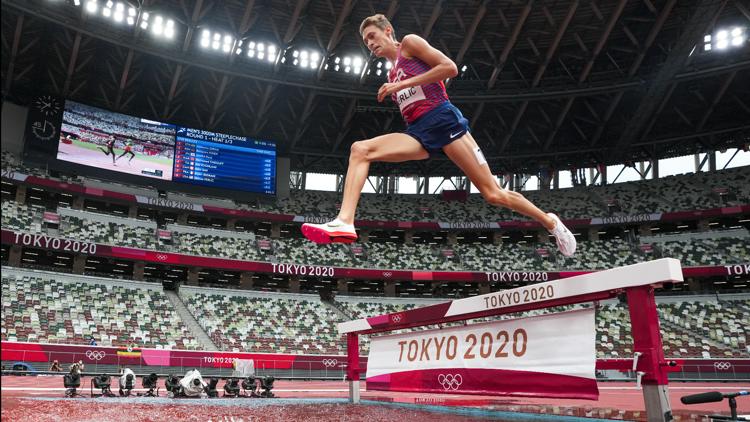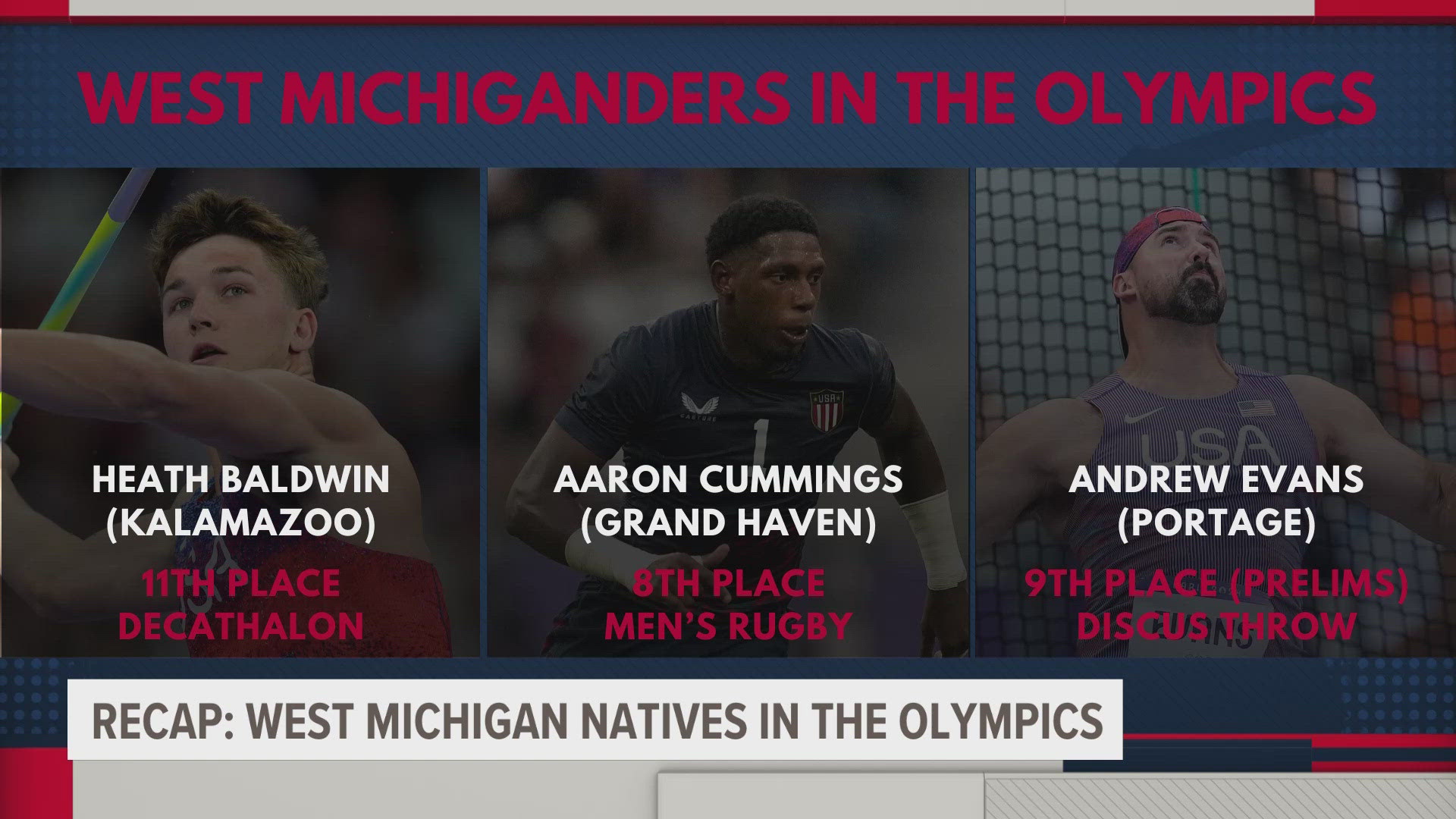EUGENE, Oregon — Mason Ferlic may someday boldly go where no steeplechaser has gone before — space.
The 30-year-old with a master's in aerospace engineering from Michigan has aspirations to become an astronaut.
For now, that plan remains a galaxy away.
Ferlic's focus is on the track at the U.S. Olympic Trials as he tries to earn a spot for the Paris Games. Down the road, it's making the switch to the marathon.
Awaiting him Friday night in the first round of the steeplechase are 28 unforgiving jumps over four fixed barriers and seven leaps over a water pit in the 3,000-meter race.
Tumbles — and plunges — happen. But each time he's picked himself up and only gotten better.
“I've had some pretty iconic falls,” said Ferlic, who put off applying for NASA this spring and put on hold his doctoral work at Michigan so he could focus on training. “But (falling) is very character-building, to have those moments where it’s humbling. It makes you light the fire.”
For the longest time, Ferlic had a newspaper photo pinned to the bulletin board in his room. It was a picture from the 2015 NCAA championships, when Ferlic mistimed his leap over the water jump and splashed head-first into the pool.
A perfect 10 — if he was in diving.
Ferlic finished last in that race, but that photo meant a lot to him because of what it came to represent — that mistakes can and do happen. It's how you respond and work that make a difference. Ferlic quoted Ed Harris' famous line in the movie “Apollo 13,” when the actor's NASA character said, “Failure is not an option.”
The next spring, Ferlic won the NCAA steeplechase race.
Just an example of picking himself back up.
Same with finishing 252nd out of 252 runners at the 2011 NCAA cross country championships his freshman year at Michigan. That could’ve sank his spirits. But it only bolstered him. He became an All-American three years later.
A pivot point in his career came around his sophomore year when a Michigan coach recommended he give steeplechase a try. It's an arduous race where jumping over barriers (36 inches high in the men’s race) and splashing through the water jumps only gets more daunting the deeper into a race.
“Those barriers," Ferlic explained, "all of a sudden appear to be six-feet tall.”
The only thing more difficult than running the steeplechase may be explaining it.
“They're like, ’It’s the one with the horse jumping, right?” Ferlic cracked. “I mean, I guess we do jump over wooden barriers.”
There are two distinct sides to Ferlic — the analytical half and the artistic/running half. Both give the other space.
The aerospace engineer portion of him is data-driven and specializes in statistics (that's his doctoral field). Ferlic works at the Data Science for Dynamic Intervention Decision-Making Center in Ann Arbor, Michigan. There, he and the team are coming up with innovative ways to answer questions in mobile health and medicine. They're taking a flow-chart approach to dictate real-time decisions.
“There’s a really strong interest in using data to improve people’s outcomes,” said Ferlic, who's from Minnesota.
For running, he prefers to be more organic. He's not constantly crunching numbers but goes with the flow.
“You would think my approach to running would also be this ultra-prescriptive, science-based, evidence-based program,” said Ferlic, who did some high-elevation training in Flagstaff, Arizona, to get ready for trials and is getting married in September. “That I’m tracking everything and monitoring everything. I definitely went through a phase with that in my running career early on. But I’ve actually swung the other direction.”
He listens to the philosophical approach of Ron Warhurst, the former Michigan coach who turns 81 in July. He's so old-school, he cracked, that it's actually now new-school.
“It's just been polished up a little bit and they use different terms for it," Warhurst said of the training methodology. "There's a lot more science involved than 20 or 30 or 40 years ago. But the human body is still the same, and it still functions the same.”
Translation: Training is not always a science experiment.
“You’ve got to listen to the internal clock and the internal signal and use your intuition and gut feeling sometimes in training,” Ferlic said.
Ferlic made the team for the Tokyo Games in 2021, but the lack of fans and cheers had an impact on him. He couldn’t help but focus on the red light on the NBC cameras, knowing that behind it were millions of fans tuning in. He didn’t advance out of his heat.
“I applaud those that performed so well in Tokyo,” he said.
About his astronaut plans: Those are literally up in the air. His brother forwarded him an application to enter the space program this spring, but the timing didn't quite work out. It's something Ferlic plans to explore after the Olympics and after continuing his work on his doctorate degree.
“It would be fun” going into space, said Ferlic, who at 6-foot-4 may be pushing the outer limits on height restrictions for the space station. “A random pivot.”
Another could be awaiting him in the running realm. He's looking at a switch to the marathon.
“I relish the day,” Ferlic said, “when I don’t have to worry about a (steeplechase) barrier anymore.”
►Make it easy to keep up to date with more stories like this. Download the 13 ON YOUR SIDE app now.
Have a news tip? Email news@13onyourside.com, visit our Facebook page or Twitter. Subscribe to our YouTube channel.
Watch 13 ON YOUR SIDE for free on Roku, Amazon Fire TV Stick, Apple TV and on your phone.



